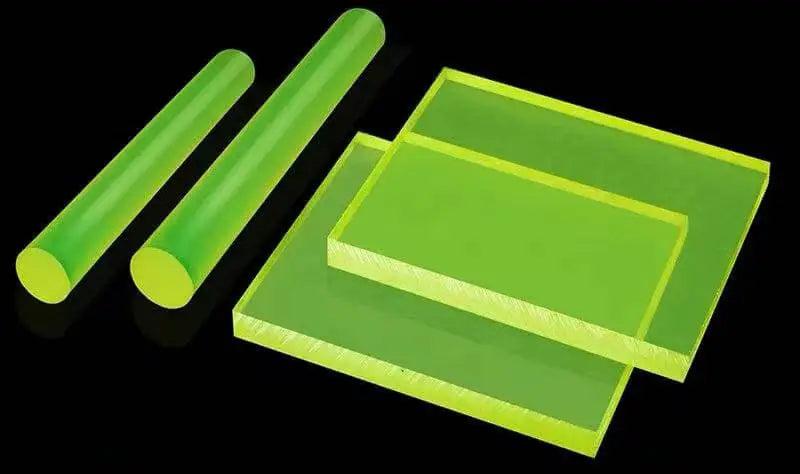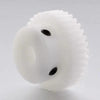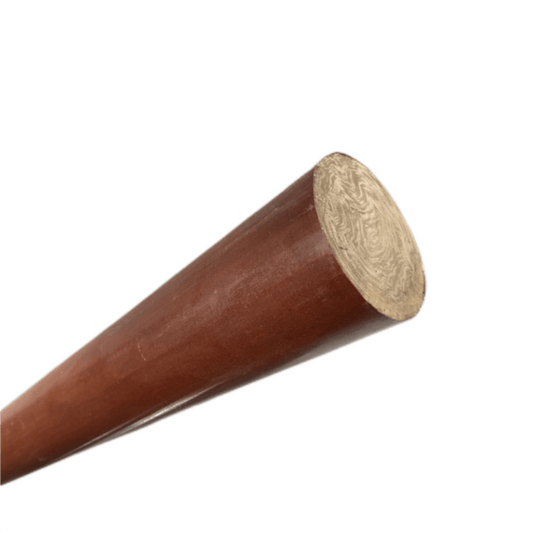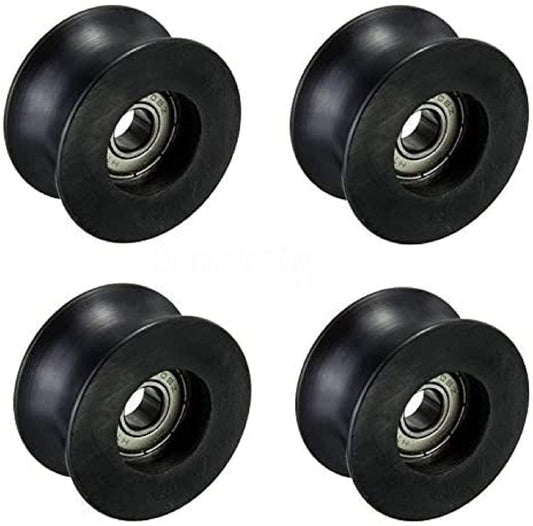When it comes to choosing between PU plastic and rubber, understanding the differences is crucial for making the right decision. This comprehensive guide delves into the key properties of polyurethane—from its durability and flexibility to its chemical resistance—comparing them directly with the strengths of rubber. Whether you’re curious about the benefits of PU foam versus rubber foam, or you need to know how polyurethane sheets stack up against rubber sheets in industrial applications, this article covers it all. Discover which material offers better cost-effectiveness and sustainability in long-term projects, and find out why PU plastic might just be the superior choice. Explore the meaning behind PU and polyurethane, and learn how these materials impact various industries today.
🎉🎉🎉Limited Time Offer Use code: QR4GNY08SHVR at checkout and enjoy a special discount on your entire order! 👉PU board

Understanding PU Plastic: Composition and Key Properties
What is Polyurethane (PU Plastic)?
Polyurethane, commonly known as PU plastic, is a unique and versatile polymer that stands out in the world of materials due to its wide range of applications. Unlike some other plastics, PU plastic is not a single material but a class of polymers that are formed by reacting diisocyanates with polyols. This chemical reaction allows manufacturers to tailor the properties of polyurethane to meet specific requirements, making it an essential material in many industries.
The Chemical Structure of PU Plastic
The structure of polyurethane is what gives it its remarkable properties. At its core, PU plastic is composed of repeating units that include urethane groups, which are formed through the reaction mentioned earlier. These urethane groups contribute to the material's flexibility, durability, and resistance to various environmental factors. The ability to adjust the ratio of diisocyanates to polyols allows manufacturers to create PU plastics with varying levels of hardness, elasticity, and chemical resistance, catering to a wide array of applications.
Key Properties of PU Plastic
PU plastic is renowned for its durability, flexibility, and resistance to abrasion, chemicals, and impact. These properties make it an excellent choice for products that need to withstand harsh conditions while maintaining performance. For example, PU foam is widely used in cushioning and insulation because of its ability to retain its shape and provide consistent support. Additionally, polyurethane sheets are often chosen for industrial applications due to their resistance to wear and tear, ensuring longevity in demanding environments.
Why Choose PU Plastic?
When considering materials for a project, it's essential to understand what PU plastic offers compared to other options. Its flexibility means it can be molded into various shapes and forms, making it ideal for custom applications. Furthermore, its chemical resistance ensures that products made from polyurethane can withstand exposure to oils, solvents, and other harsh chemicals without degrading. This makes PU plastic a top choice for industries ranging from automotive to construction, where reliability and performance are paramount.
By exploring the composition and key properties of PU plastic, it becomes clear why this material is so widely used and valued. Whether you need a material that is durable, flexible, or resistant to chemicals, polyurethane provides a solution that meets these demands and more.

Rubber vs. Polyurethane: A Detailed Comparison of Material Strengths
Understanding Tensile Strength in Rubber and Polyurethane
Tensile strength is a critical factor when evaluating materials like rubber and polyurethane. Rubber is renowned for its high tensile strength, which allows it to withstand significant stretching forces without breaking. This property makes rubber an ideal choice for applications that require flexibility and durability, such as in automotive tires, seals, and gaskets.
On the other hand, polyurethane also exhibits impressive tensile strength, though it is typically tailored to specific applications. While polyurethane might not stretch as much as rubber, it compensates with its ability to resist tearing and abrasion under stress. This makes polyurethane particularly suitable for situations where materials are exposed to continuous mechanical wear, such as in industrial conveyor belts and heavy-duty wheels.
Comparing Elasticity: Rubber’s Flexibility vs. Polyurethane’s Adaptability
Elasticity refers to a material's ability to return to its original shape after being deformed. Rubber is highly elastic, making it ideal for products that need to endure repeated deformation, such as elastic bands and vibration dampers. The natural flexibility of rubber allows it to absorb shocks and vibrations efficiently, which is why it is commonly used in automotive and aerospace industries.
Polyurethane, while not as inherently elastic as rubber, offers a different type of flexibility. Polyurethane’s adaptability comes from its ability to be formulated with varying levels of hardness and elasticity, depending on the specific requirements. For instance, polyurethane foam can be engineered to provide cushioning similar to rubber but with added benefits such as chemical resistance and longer lifespan. This adaptability makes polyurethane a versatile choice for a wide range of applications, from furniture padding to insulation materials.
Impact Resistance: Rubber’s Resilience vs. Polyurethane’s Toughness
When it comes to impact resistance, both rubber and polyurethane have their strengths. Rubber is known for its resilience, meaning it can absorb and disperse energy from impacts without suffering significant damage. This property is why rubber is frequently used in shock absorbers, protective coatings, and sports equipment.
Polyurethane, however, offers a different kind of toughness. It combines a degree of flexibility with high resistance to tearing and puncture, making it suitable for applications where both durability and impact resistance are essential. Polyurethane coatings, for example, are often applied to surfaces that require protection from both mechanical impacts and harsh environmental conditions. Additionally, polyurethane is less likely to crack under extreme conditions, which is why it is often used in industrial linings and wear-resistant parts.
Material Performance in Different Applications
The choice between rubber and polyurethane often comes down to the specific demands of the application. Rubber is typically favored for its elasticity and ability to return to its original shape after deformation, making it ideal for dynamic applications like tires, seals, and gaskets. In contrast, polyurethane is selected for its customizable properties and its ability to withstand mechanical wear, impacts, and harsh chemicals, making it the preferred choice for industrial components, protective coatings, and heavy-duty wheels.
Each material brings its own set of advantages, and understanding the strengths of rubber and polyurethane helps in making the right decision for specific use cases. By assessing the tensile strength, elasticity, and impact resistance of both materials, you can determine which material is best suited for your particular needs.

Polyurethane Sheets vs. Rubber Sheets: Choosing the Right Material for Industrial Use
The Versatility of Polyurethane Sheets in Industrial Applications
Polyurethane sheets are highly valued in industrial settings due to their remarkable versatility and durability. These sheets are widely used in manufacturing processes where abrasion resistance and impact resistance are crucial. For example, in conveyor belts and machine parts, polyurethane sheets provide a robust solution that can withstand continuous wear and tear without compromising performance.
Another key advantage of polyurethane sheets is their chemical resistance. In environments where exposure to oils, solvents, or other harsh chemicals is common, polyurethane proves to be an excellent choice. This resistance ensures that the material maintains its integrity over time, making it ideal for use in automotive and chemical processing industries where reliability is essential.
The Strengths of Rubber Sheets in Industrial Use
Rubber sheets are renowned for their elasticity and resilience, which makes them suitable for a wide range of industrial applications. These sheets are often used in situations where flexibility and the ability to absorb shocks and vibrations are required. For instance, rubber sheets are commonly employed in gaskets, seals, and vibration dampening pads, where they provide effective cushioning and protect machinery from damage.
One of the standout features of rubber sheets is their natural resistance to extreme temperatures and weather conditions. This makes rubber a preferred material in outdoor applications and industries where exposure to heat, cold, or moisture is inevitable. Additionally, rubber sheets offer excellent compression resistance, which means they can withstand heavy loads without losing their shape or functionality, making them ideal for construction and heavy machinery applications.
Key Factors to Consider When Choosing Between Polyurethane and Rubber Sheets
When deciding between polyurethane sheets and rubber sheets for industrial use, several factors should be taken into account. One of the primary considerations is the environmental conditions the material will face. For example, if the application involves exposure to chemicals or requires a material that can resist abrasion, polyurethane may be the better choice. Its superior chemical resistance and ability to withstand mechanical wear make it ideal for demanding industrial environments.
On the other hand, if flexibility and the ability to handle vibrations are more critical, rubber sheets may offer the advantages needed. Rubber's elasticity and ability to recover quickly from compression make it well-suited for applications that require frequent movement or where the material will be under constant stress.
Another crucial factor is the cost-effectiveness of the material in the long term. While polyurethane sheets may have a higher initial cost, their durability and low maintenance requirements can result in significant savings over time, especially in applications where replacement costs and downtime are a concern. Conversely, rubber sheets may be more cost-effective for applications that require short-term solutions or where frequent replacements are expected due to the nature of the environment.

Applications in Manufacturing, Automotive, and Construction
In the manufacturing industry, both polyurethane and rubber sheets are used extensively, but for different purposes. Polyurethane sheets are often chosen for their wear resistance and ability to handle repetitive tasks without degrading, such as in cutting surfaces or protective linings. Meanwhile, rubber sheets are preferred in applications that involve sealing or dampening vibrations, such as in machine mounting or equipment isolation.
In the automotive industry, polyurethane is favored for its ability to maintain performance in the presence of oils and chemicals, making it ideal for bushings, seals, and gaskets. Rubber, however, is often used for tires, hoses, and belts due to its flexibility and resistance to environmental factors.
For construction applications, rubber sheets are commonly used for roofing and waterproofing due to their excellent weather resistance and ability to form tight seals. Polyurethane sheets, on the other hand, are often used in insulation and protective coatings where thermal resistance and durability are crucial.
By carefully considering the specific requirements of the application, you can determine whether polyurethane or rubber sheets will provide the best performance, ensuring the longevity and efficiency of your industrial projects.
Environmental Impact: Is Polyurethane More Sustainable Than Rubber?
Assessing the Production Process of Polyurethane and Rubber
The environmental impact of both polyurethane and rubber begins with their production processes. Polyurethane is a synthetic material derived from petrochemicals, which involves the extraction and processing of fossil fuels. This production process is energy-intensive and contributes to greenhouse gas emissions, raising concerns about the sustainability of PU plastic.
Rubber, on the other hand, can be produced either naturally or synthetically. Natural rubber is harvested from the sap of rubber trees, which is a renewable resource. However, the cultivation of rubber trees often leads to deforestation and biodiversity loss, which are significant environmental issues. Synthetic rubber is also derived from petrochemicals, similar to polyurethane, and shares many of the same environmental challenges, including high energy consumption and carbon emissions during production.
Recyclability and Biodegradability of Polyurethane vs. Rubber
When it comes to recyclability, polyurethane presents certain challenges. Although it can be recycled, the process is often complex and not widely implemented. Polyurethane is typically downcycled into lower-value products rather than being fully recycled into new PU plastic products. This limitation reduces the material’s overall sustainability and increases its ecological footprint.
Rubber, particularly natural rubber, has a more favorable profile in terms of biodegradability. Over time, natural rubber can break down in the environment, reducing its long-term impact. However, synthetic rubber does not biodegrade as effectively and can persist in the environment for many years. The recyclability of rubber depends on its type and composition; for example, tires made from synthetic rubber are notoriously difficult to recycle and often end up in landfills, contributing to environmental pollution.
The Ecological Footprint of Polyurethane and Rubber
The ecological footprint of both polyurethane and rubber extends beyond their production and disposal. Polyurethane products, due to their durability and resistance to degradation, contribute to long-term waste accumulation in landfills if not properly managed. Additionally, the breakdown of polyurethane in the environment can release harmful chemicals, further impacting ecosystems.
Rubber also has a significant ecological footprint, particularly in the form of microplastics. Synthetic rubber products, such as tires, contribute to the growing problem of microplastic pollution when they degrade. These tiny particles can enter waterways and have harmful effects on aquatic life. However, natural rubber has a smaller ecological footprint due to its renewable nature and biodegradability, but its environmental benefits are offset by the negative impacts of deforestation and habitat loss.
Balancing Performance with Environmental Responsibility
When choosing between polyurethane and rubber, it's important to balance the performance benefits of each material with their environmental impacts. Polyurethane offers exceptional durability and versatility, making it a valuable material for many applications. However, its environmental drawbacks, particularly in terms of recyclability and ecological impact, must be carefully considered.
Rubber, while offering better biodegradability in its natural form, also presents significant environmental challenges, especially when synthetic versions are used. The choice between PU plastic and rubber should therefore take into account not only the specific needs of the application but also the broader environmental implications of each material.

Cost-Effectiveness: PU Plastic vs. Rubber in Long-Term Applications
Initial Costs: Comparing PU Plastic and Rubber
When evaluating the cost-effectiveness of materials like PU plastic and rubber, the initial purchase price is often a primary consideration. Generally, rubber tends to have a lower upfront cost compared to polyurethane. This makes rubber an attractive option for applications where budget constraints are a significant concern or where the material will be used in less demanding environments.
However, it’s important to consider that the lower initial cost of rubber might come with trade-offs in terms of durability and longevity. On the other hand, PU plastic typically commands a higher initial price, but this cost is often justified by its superior durability and versatility in various applications. For projects that demand high performance and long-lasting materials, the initial investment in PU plastic may offer greater value over time.
Durability and Maintenance: Longevity of PU Plastic vs. Rubber
Durability is a crucial factor in determining the cost-effectiveness of materials over the long term. Polyurethane, known for its exceptional resistance to abrasion, impact, and chemical exposure, often outperforms rubber in harsh or demanding environments. This durability translates into less frequent replacements and lower maintenance costs, making PU plastic a more cost-effective choice for long-term applications.
Rubber, while also durable, is generally more susceptible to wear and tear, especially in environments where it is exposed to chemicals, oils, or extreme temperatures. This can lead to higher maintenance requirements and more frequent replacements, which can increase the overall cost of using rubber in the long run. In industries where reliability and minimal downtime are critical, the higher durability of PU plastic can provide significant cost savings over time.
Long-Term Value: Weighing the Benefits of PU Plastic Against Rubber
When assessing long-term value, it’s important to look beyond just the initial purchase price and consider the total cost of ownership, which includes factors like durability, maintenance, and replacement frequency. PU plastic may require a higher upfront investment, but its long lifespan and low maintenance costs often make it more cost-effective for applications where longevity is essential.
For example, in industries such as manufacturing, automotive, and construction, where materials are subjected to constant stress and harsh conditions, the resilience of polyurethane can lead to fewer interruptions and lower overall costs. In contrast, rubber may be more economical for short-term projects or for applications where the material is not exposed to particularly challenging conditions.

Making the Right Choice for Your Application
Choosing between PU plastic and rubber ultimately depends on the specific requirements of your application. If initial cost is the primary concern and the application does not demand extreme durability, rubber might be the more economical choice. However, if long-term performance and reduced maintenance are priorities, investing in polyurethane could offer better value for money over the lifespan of the product.
In applications where durability, chemical resistance, and impact resistance are critical, PU plastic provides a cost-effective solution that minimizes the need for frequent replacements and reduces downtime, offering substantial savings in the long run. By carefully considering these factors, you can make an informed decision that aligns with both your budget and performance needs.
Frequently Asked Questions about Polyurethane (PU) Plastic and BeePlastics Customization
1. What is PU Plastic, and how is it different from other materials?
Answer: PU plastic, or polyurethane, is a versatile polymer known for its flexibility, durability, and resistance to abrasion and chemicals. Unlike other plastics, PU can be tailored to have varying levels of hardness and elasticity, making it suitable for a wide range of applications, from cushioning and insulation to industrial parts and coatings.
2. Can BeePlastics customize polyurethane products according to my specifications?
Answer: Yes, BeePlastics can undertake any level of customization, whether it’s for sample customization or batch production. Our team works closely with you to ensure that the final product meets your exact specifications, regardless of the complexity or scale of your project.
3. What file formats does BeePlastics accept for customization projects?
Answer: BeePlastics accepts a variety of file formats, including PDF and CAD files. This flexibility allows us to work seamlessly with your designs and ensure that the final product is precisely what you envisioned.
4. Is there a minimum order quantity (MOQ) required for custom polyurethane products?
Answer: No, there is no minimum order quantity (MOQ) required at BeePlastics. We understand that every project is unique, so whether you need a single prototype or a large production run, we can accommodate your needs.
5. How long does the production cycle take for custom polyurethane products?
Answer: The production cycle at BeePlastics depends on the quantity and complexity of the order. We tailor the production timeline to each project and provide real-time updates on the progress to ensure transparency and timely delivery.
6. Does BeePlastics offer samples for custom polyurethane products?
Answer: Yes, BeePlastics supports the provision of samples. We believe in allowing our customers to see and feel the quality of our products before committing to a larger order. The sample is free of charge, with the only cost being the shipping, which is the customer’s responsibility.
7. What are the common applications of PU plastic in industrial settings?
Answer: PU plastic is commonly used in industrial applications such as conveyor belts, machine parts, seals, and protective coatings. Its resistance to abrasion, impact, and chemicals makes it an ideal choice for demanding environments where durability and performance are crucial.
8. How does polyurethane compare to rubber in terms of environmental impact?
Answer: Polyurethane and rubber both have environmental impacts, but they differ in several ways. Polyurethane is more durable and often requires less frequent replacement, reducing waste over time. However, it is less biodegradable than natural rubber. BeePlastics focuses on providing sustainable solutions by offering recyclable PU materials and minimizing waste in production.
9. What factors should I consider when choosing between PU plastic and rubber for my project?
Answer: When choosing between PU plastic and rubber, consider factors such as the operating environment, the need for chemical resistance, durability requirements, and cost. PU plastic generally offers superior resistance to chemicals and abrasion, making it suitable for long-term applications in harsh environments, while rubber is often chosen for its elasticity and lower initial cost.
10. How can I place an order for custom polyurethane products with BeePlastics?
Answer: Placing an order with BeePlastics is straightforward. You can contact our sales team with your project specifications and file formats, and we will guide you through the process. Whether you need a sample or a full production run, we ensure that the entire process is smooth and transparent, with real-time updates on production progress.
As you consider the best material for your specific needs, it's clear that both PU plastic and rubber offer distinct advantages depending on the application. PU plastic stands out for its exceptional durability, chemical resistance, and ability to be customized to precise specifications, making it an ideal choice for long-term, high-performance applications. On the other hand, rubber provides excellent flexibility and cost-effectiveness for projects where these qualities are paramount. By weighing the cost-effectiveness, environmental impact, and performance characteristics of each material, you can make an informed decision that aligns with your project’s requirements and sustainability goals.
Ready to explore how PU plastic can enhance your next project? Fill out the contact form below to get personalized advice from our experts. Or, if you're ready to take the next step, jump over to our PU Plastic Sheets & Rods Collection and discover the materials that will bring your vision to life.

🎉🎉🎉Limited Time Offer Use code: QR4GNY08SHVR at checkout and enjoy a special discount on your entire order! 👉PU board






